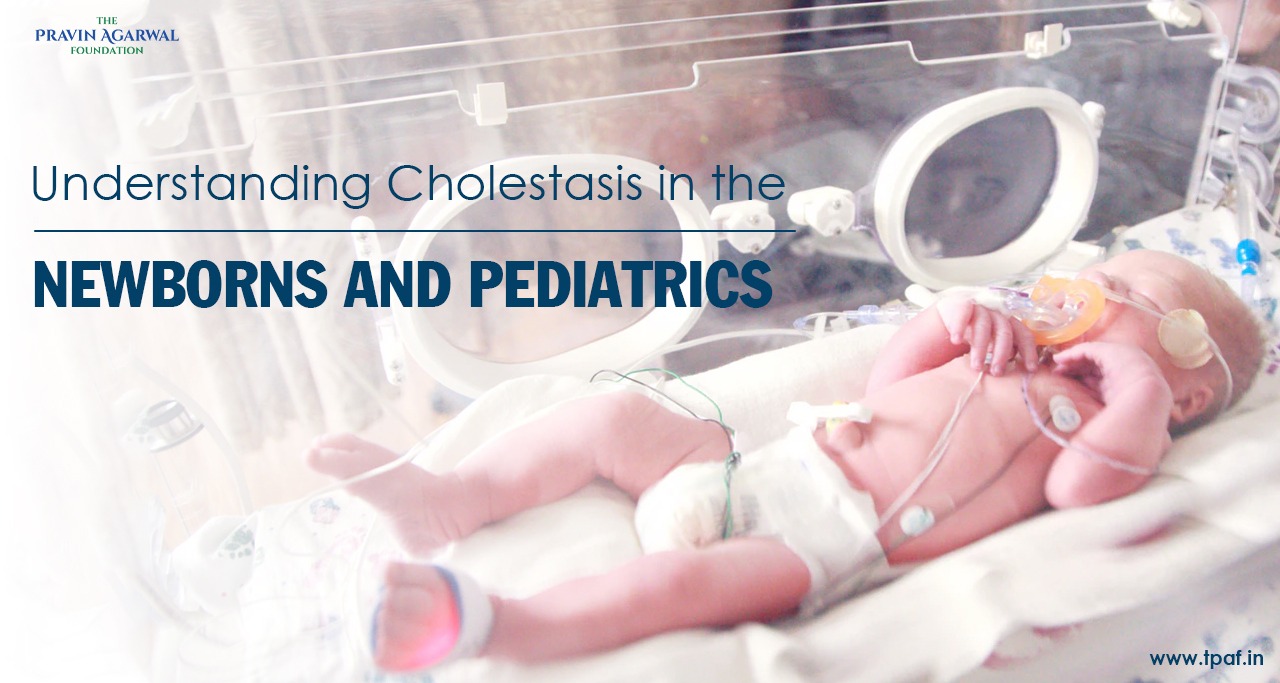Latest Update
Blogs

February 11,2020
/ adminUnderstanding Cholestasis in the Newborns and Pediatrics
Cholestasis is as the impairment of bile flow from the liver. It commonly occurs in pregnant women and newborns. Neonatal cholestasis is typically characterized by the baby’s liver’s inability to form or secrete bile. This condition is rare and 1 newborn among 2500 babies are affected by this condition, on average.
What Causes Cholestasis
Many causes can lead to the onset of cholestasis liver disease. Two of the most common are- biliary atresia and inherited syndromes of intrahepatic cholestasis. Sometimes, the causes of chronic liver disease lead to liver failure, thus needing Liver Transplantation In Children.
There are two sets of reasons behind the occurrence of cholestasis. First, are those that originate within the liver. Second, are those that arise outside the liver.
Within The Liver- check out the causes that are involved with inside the liver cholestasis
- Alcoholic liver disease
- Acute hepatitis
- Primary biliary cholangitis
- Scarring and inflammation of the bile ducts
- Cirrhosis due to viral hepatitis B or C
- Ceratin drugs like- chlorpromazine, amoxicillin, azathioprine, clavulanate, oral contraceptives, etc.
- Hormonal effects on the bile flow at the time of pregnancy
- Cancer that has got spread in the entire liver
Outside The Liver- check out the causes that are involved with outside the liver cholestasis
- Stone in a bile duct
- Cancer of a bile duct
- Narrowing of a bile duct
- Cancer of the pancreas
- Inflammation of the pancreas
Symptoms of the condition
Cholestasis In Infants takes place due to disorder of the liver, pancreas, or the bile duct. If the child’s skin and whites of the eyes look yellow, has dark urine, or light-coloured stool, then it points towards cholestasis.
Sometimes, several symptoms develop in children with ongoing or chronic liver disease. Check out some of the other symptoms of cholestasis liver disease in children.
- Bone fractures
- Itchy skin
- Loss of appetite
- Easy bleeding and bruising
- Malnutrition is also a vital sign of a child with chronic liver disease or cholestasis. The reason might be the unprocessed nutrients in the liver of the child.
- Severe weight loss or diminishing growth since the liver cant help the body in fat utilization significantly
- Impaired absorption of minerals leads to other conditions like Rickets
Diagnosis of cholestasis in children
Any infant who develops jaundice like conditions 2 weeks after birth needs to be tested for cholestasis. If the doctor suspects the condition, he will request a blood test. Abnormally high level of bilirubin and liver enzymes may point to the onset of the condition in children. Positive cases may report a direct (or conjugated) bilirubin level of greater than 2.0 mg/dL, which will be more than 20% of the total bilirubin concentration.
In addition, the child may also have to undergo these tests –
- Testing for genetic conditions and infections
- Imaging tests like ultrasound or MRI scan
- Liver biopsy where a minor portion of the liver is removed and examined for the presence of the condition inside the liver cells.
Treatment
If the cause of the condition is due to paternal reasons then experts suggest no treatment as the condition will subside in a few weeks on its own.
For more advanced cases, doctors usually recommend ursodeoxycholic acid 10 to 15 mg/kg once/day. This course helps improve bile flow and brings down the total bilirubin count in bloodstream.
If there is no specific therapy, then they may suggest a supportive and nutritional enhancement in pediatric liver care by recommending Vitamin A, D, E, and K supplements
Prognosis In Child Liver Disease
If the neonatal cholestasis remains undiagnosed for long, it may cause conditions like Biliary atresia, the scarring of liver cells and tissues due to bile buildup. This can further lead to loss of liver function or cirrhosis, thus necessitating surgical options like liver transplant in children.
If the condition is diagnosed and treated on time, then liver functions like bile secretion return back to normal and the infant can lead a regular and healthy life ahead.
Availability Of Good Nutrition With Supportive Care
Metabolic activities take place in the liver hence liver one of the essential body sites. During liver disease in children, lipid metabolism, extrahepatic protein, carbohydrate, and metabolic function becomes impaired. Consequently, cholestasis has always been negative on the growth, nutritional status, and development of a child. Therefore, ample of calorie intake to correct or prevent the malnutrition and malabsorption should be the sole aim of supportive nutritional care. An equal proportion of protein, vitamin, calorie, and carbohydrate must be included in the diet chart for the children who are suffering from cholestasis liver disease.
Conclusion
Early recognition, timely evaluation, and proper management of cholestasis can lead to better outcomes for cases of the condition prevalent in newborns. Very few undiagnosed cases may lead to liver failure. In such conditions, organizations like TPAF can help your child with pediatric liver transplant surgery and associated care. Our expertise and empathy will help your child overcome the condition and lead a long and healthy life.
 Donate
now
Donate
now



Related Posts
Aayush Jadav- A Remarkable Journey of Hope
moreKaivalya Mayane- A Remarkable Journey of Hope
moreVendant Joshi- A Remarkable Recovery
more